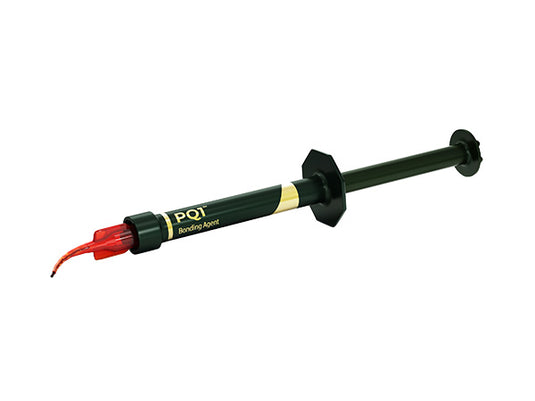
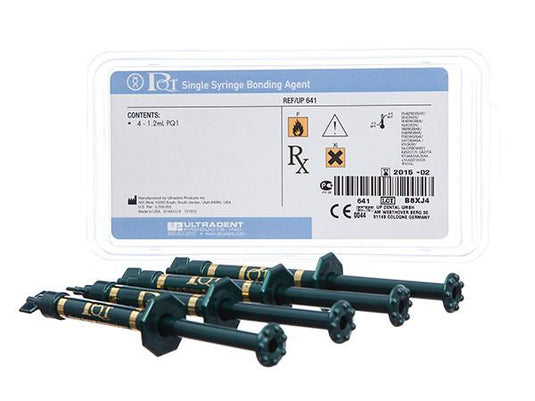
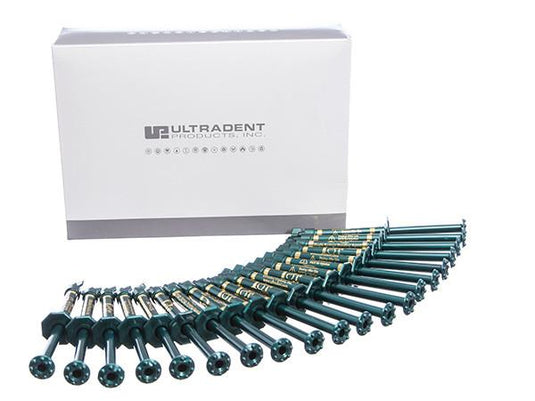
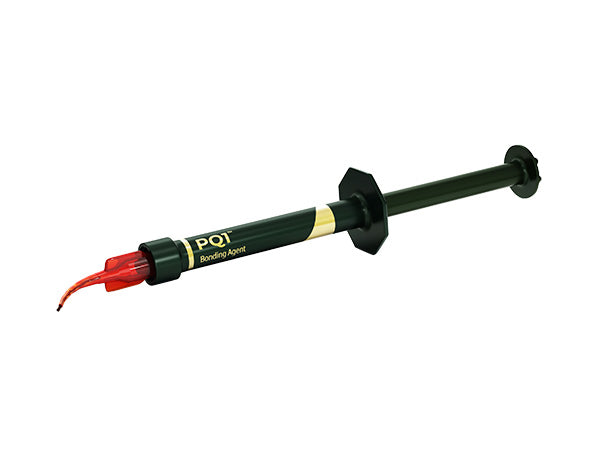
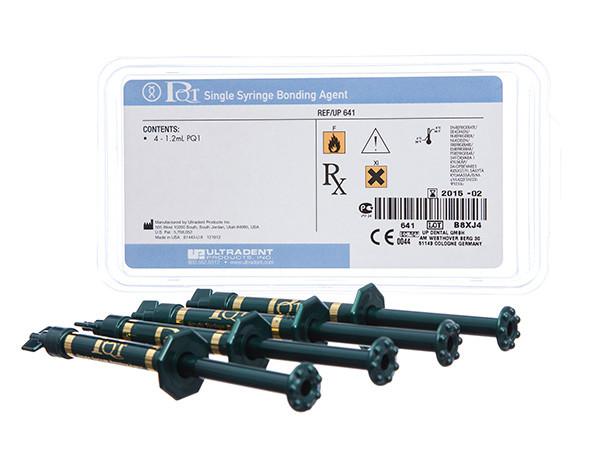
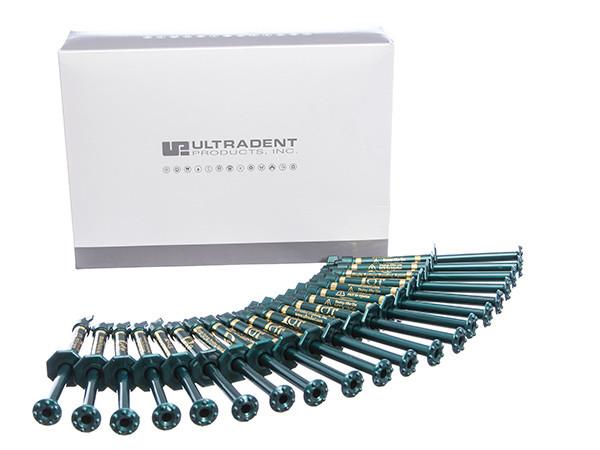
- Product Details
- Clinical Technique
- Technical Details
- Testimonials
- Configurations
- FAQ
- Resources
- Accessories
PQ1™ bonding resin is a syringe-delivered, single-component, light-cured resin that uses ethyl alcohol as a solvent. It is 40% filled and radiopaque. PQ1 bonding resin bonds to dentin/enamel, cast metal, porcelain, amalgam, and composite. Other features and benefits include:
- High bond strength helps prevent microleakage1,2
- Radiopaque
- Easy to use
- Places directly
- Cures with all lights

Indications for Use
Use for almost all bonding needs in restorative dentistry. Chemical-cured luting and chemical-cured composites, namely PermaFlo™ DC luting resin, also bond to light-cured PQ1 bonding resin. PQ1 bonding resin is conducive for bonding to dentin and enamel using composite or amalgam, porcelain, metal, and composite repair.



1 Shear Bond comparison PQ1 Immediate to Dentin. 2001. Data on file.
2 Post Operative Tooth Sensitivity, Clinical Research Associates Newsletter 1999 Nov: 23(11)3.
PQ1 Step by Step
– See Instructions for Use for complete instructions, warnings, and precautions.
-
Etch with Ultra-Etch.

-
Prime/bond in one.

-
Finished restoration.

Highly Filled Chemistry
Note exceptional filler penetration for high-strength bonding.


Photos courtesy of Professor Marcos Vargas.
Syringe Delivery
Delivered via syringe, PQ1 bonding resin is easy to place directly where you need it.
Gluten-Free
This Ultradent product is certified gluten free, so it fits in with the lifestyles of patients from any background.
"I have used Prime and Bond,* Single Bond,* Solo Bond,* and a few others. The consistency of results has been better with PQ1 than with any of the others, and 90% of the time, there is less sensitivity."
Dr. Robert Anderson – Clearfield, UT
"Before using PQ1, I did not trust my adhesive. Mechanical retention was still my only security. Since switching to PQ1, I don't need undercuts in my preps and I no longer use any pins."
Dr. Michael Stephens – San Antonio, TX
*Trademark of a company other than Ultradent.
PQ1 syringe refills are available in 4-Pack (775641) or 20-Pack (771806) quantities.
Q: Can I use PQ1 bonding resin with all curing lights?
A: PQ1 bonding resin cures with all lights, however, we do not recommend use with argon lasers.
Q: What kind of filler is found in PQ1 bonding resin?
A: The fillers are silica dioxide and FluorUtite.
Q: What is the film thickness of PQ1 bonding resin?
A: PQ1 bonding resin can be thinned to 2µm.
Q: What type of monomer does PQ1 bonding resin contain?
A: PQ1 bonding resin is BisGMA based but also contains other methacrylate-based hydrophilic monomers.
Q: How does a highly-filled bonding resin create a higher bond strength?
A: Fillers in bonding agents facilitate stronger bonds because their presence reduces polymerization shrinkage, has a lower coefficient of expansion, and reduction in water absorption of the bonding resin. When resins cure, they shrink and the fillers provide a basic structure to counteract that shrinkage. When two different materials such as a resin and a tooth are exposed to temperature changes, they expand and contract at different rates. The fillers placed in resins typically have a coefficient of expansion that is similar to that of a tooth; therefore, the tooth and the resin expand and contract more closely to the same amount, placing less force on the tooth resin interface. Unfilled resins absorb water which cause them to distort through a process called hydrolysis. The addition of fillers reduces the amount or degree of water absorption. This places less detrimental force on the tooth bonding resin interface. The addition of fillers reduces the loss of bonding resin at the margin, and increases the strength of resins. All of these improved physical properties make the use of a filled bonding resin preferable over an unfilled bonding resin.
Q: Are there any instances where the etch step may be skipped with PQ1 bonding resin?
A: The only instances where the etch step can be skipped is on deciduous teeth, deep subgingival class V, or deep subgingival class II preparations. In these cases, etching may initiate bleeding. Acid etch is not just important for roughening the bonding surface; it is also important for cleaning this surface. If the doctor skips the etch step, they should apply some Consepsis prior to placing the restoration. For the best bonds, however, the doctors should still etch.
View the PQ1 Single-Resin Bonding IFU.
View the PQ1 Single-Resin Bonding SDS.
View the Product Allergen Information.
Recommended Etch: Ultra-Etch
Recommended Tips: Inspiral Brush tips or Blue Micro tips
